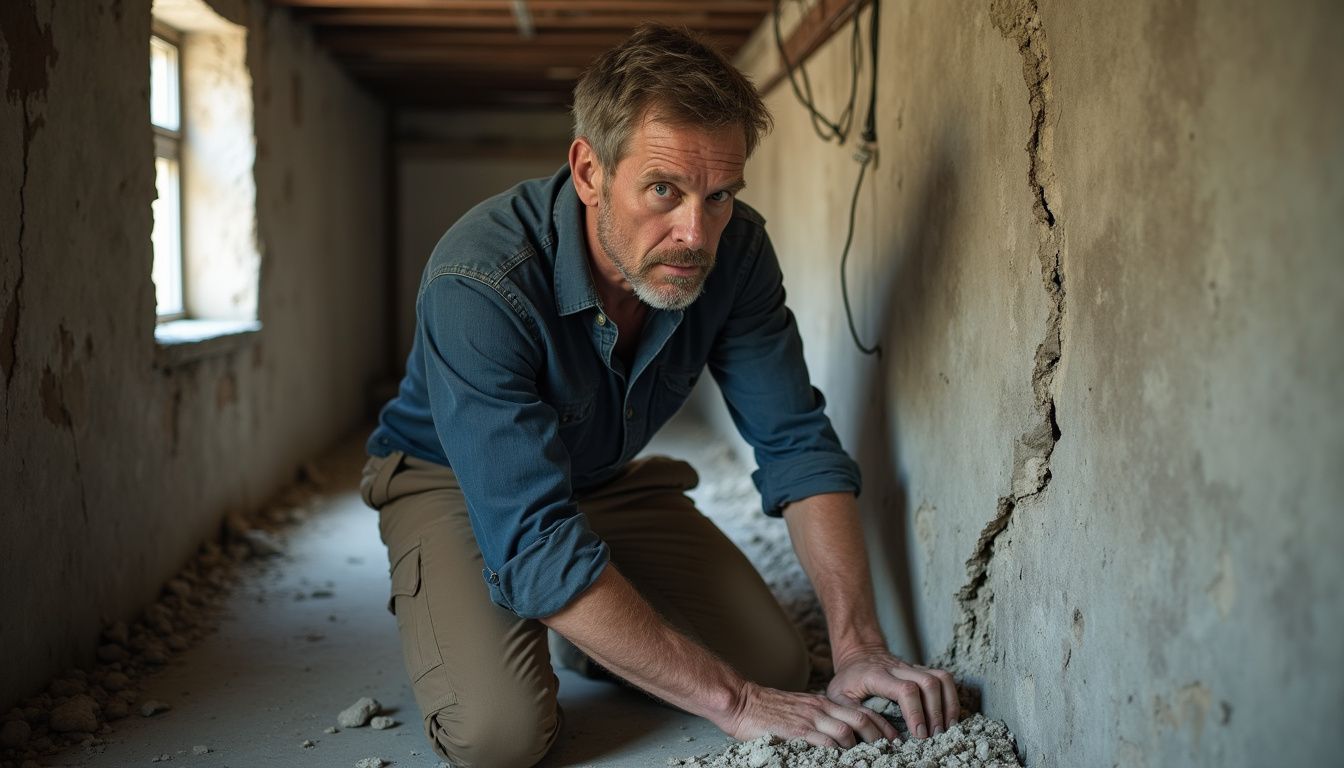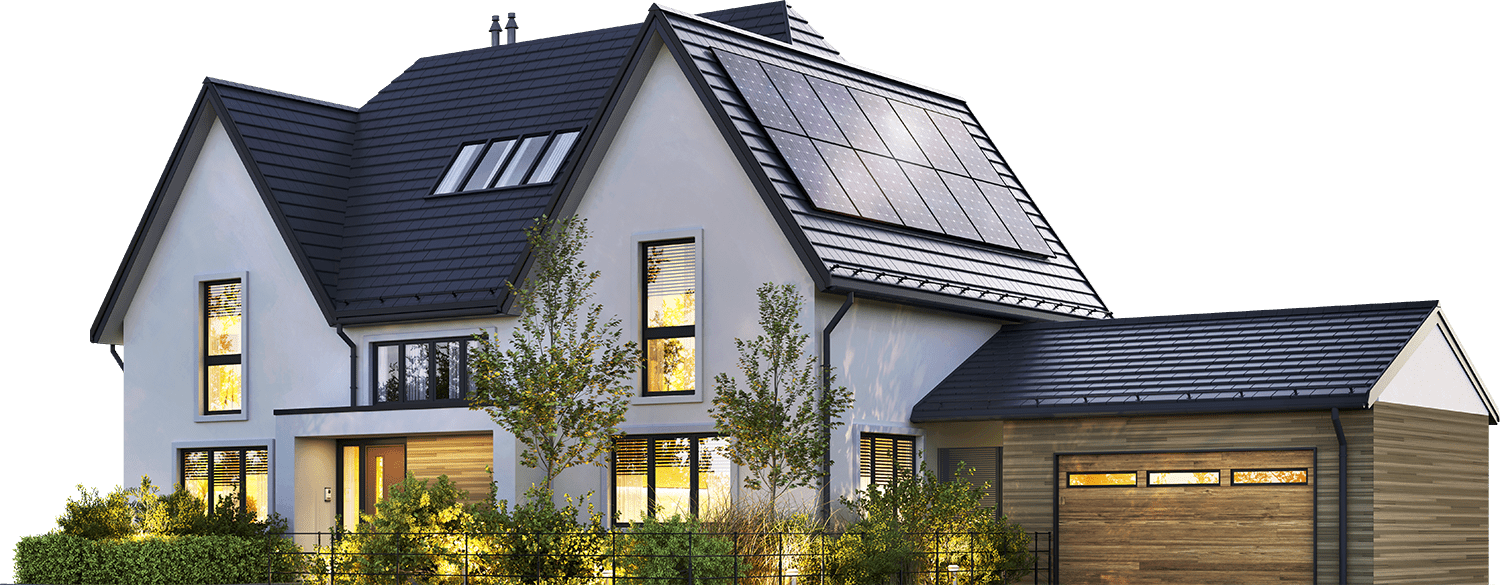Are you having trouble selling your house quickly for cash due to safety concerns? Many homes fail basic inspections due to structural code violations, like faulty wiring or missing handrails.
This blog explains what these violations mean, why they matter for home safety, and how to spot or fix them. Continue reading to protect your home and make the selling process easier.
Key Takeaways
- Structural code violations are safety issues, such as faulty wiring, missing handrails, or weak floor supports. These can cause fires, falls, and even house collapse.
- Homes with code violations are more difficult to sell and may receive lower offers. Buyers worry about safety. Insurers may also refuse coverage.
- Regular home inspections by a qualified inspector help find problems early. Getting permits for repairs is important to follow safety rules.
- Poor plumbing, bad ventilation, or missing smoke alarms can lead to health risks, injuries, or fires. Always fix these issues to keep people safe.
- Keep records of fixes and upgrades. This helps prove your home is safe and ready to sell fast for cash. No official sources or numbers are given in the article.
What Are Structural Code Violations?

Structural code violations occur when a building fails to comply with safety regulations. These rules help keep homes safe and strong for everyone who lives in them.
Definition and common examples
Building codes set safety standards for homes. Code violations occur whenever work does not comply with these rules. Some common examples include incorrectly cut joists, missing ground-fault circuit interrupter (GFCI) outlets by sinks, and not enough air flow for appliances.
Weak framing or bad floor supports can cause sagging floors or settling walls.
Missing handrails, loose decks, faulty plumbing vents, and uncovered electrical wires are also building code violations that hurt home safety. Failing to install smoke detectors is a big life safety risk, too.
A qualified home inspector often finds these problems during inspection.
The importance of adhering to building codes
Sticking to building codes keeps your house safe. These safety regulations help prevent dangers such as fires, electrical shocks, and weak floors that may sink or break. If you skip steps or use the wrong materials during repairs or upgrades, your home could end up with sagging walls or faulty wiring.
Broken pipes and missing handrails also put everyone at risk for injury.
Getting permits for every job is key. Inspections catch problems early before they put your family in danger. Qualified inspectors can spot code violations quickly, such as bad framing or not enough insulation behind the walls.
Following local construction standards makes your property safer and easier to sell quickly for cash, as buyers trust homes that pass code enforcement checks without issue.
Common Structural Code Violations
Many homes have issues that violate building codes. Things like weak floor supports, faulty wiring, and poor fire safety measures can make a home unsafe.
Improper framing or floor supports
Incorrectly cut joists or missing support beams can cause floors to sag and walls to settle. These code violations often occur when someone removes a post or fails to adhere to proper framing standards.
Poor floor supports reduce the home’s load-bearing strength. I once saw a house where the floors felt bouncy, and a home inspector found several missing supports under the kitchen.
That seller had to spend thousands on repairs before he could close a cash sale.
Inspections catch these problems early. Having a qualified inspector inspect the framing and support beams helps ensure your home is safe and code-compliant. Obtaining the correct permits for repairs and adhering to local code compliance rules helps protect your property value.
Cutting corners with floor supports can lead to big risks and costly fixes later.
Faulty electrical wiring and systems
Faulty electrical wiring can cause big problems. It leads to shocks and fires, putting everyone at risk. Common issues include missing or broken ground-fault circuit interrupter (GFCI) outlets and improper grounding.
These problems can make your home unsafe.
Improper labeling of circuits adds to the danger. This confusion can lead someone to work on a live wire by accident. A bad ventilation system may also worsen electrical hazards in your home.
A qualified inspector is key to finding these violations before you sell your house fast for cash. Always get the right permits and follow local building codes for safety and compliance.
Inadequate fire safety measures
Inadequate fire safety measures can put lives at risk. Missing or outdated smoke detectors and carbon monoxide alarms are serious issues. They do not alert people in time to escape a fire.
Improper venting of machines can also create hazards. It may fail to provide enough air for safe burning.
Blocked exits make it difficult to exit during an emergency. If fire safety devices are not installed correctly, they can obstruct safe escape routes. Engaging a qualified home inspector is key to finding these problems before selling your house fast for cash.
Obtaining permits for renovations ensures you meet fire safety regulations, too, keeping everyone safe in your home.
Poor plumbing and venting systems
Poor plumbing and venting systems cause major issues in homes. They can lead to serious safety hazards like water damage, fires, and even structural collapse. Inadequate ventilation means appliances might not get enough combustion air.
This can create dangerous situations.
Missing or poorly installed plumbing fixtures often lead to poor drainage. This increases the risk of water damage over time. Improperly vented mechanical systems may route vents into attics, which poses a risk to your home’s safety.
Condensation from these systems can cause floors to sag and weaken structures as well. Compliance with plumbing and venting codes ensures homes are safe and sound; it’s crucial if you want to sell your house quickly for cash.
Missing or unstable handrails and decks
Missing or unstable handrails and decks can create serious safety hazards. Homes without proper handrails lack stability. This increases the risk of accidents, especially on stairs and decks.
Unstable structures can lead to falls and injuries.
Improper deck flashing may cause wood rot over time. This weakens the entire structure, leading to potential collapse. Home inspections are key to finding these problems early on.
A qualified inspector knows how to check for code compliance with handrails and decks. Following local building regulations helps ensure safety at home as well.
How Structural Code Violations Affect Home Safety
Structural code violations can lead to serious safety risks in your home. Weak supports might cause parts of the house to collapse. Poor wiring can spark fires or give shocks. Bad ventilation can also lead to health issues.
These issues make a safe home feel unsafe.
Risks of structural collapse
Structural code violations can lead to serious risks of structural collapse. For example, incorrectly cut joists and missing support posts can cause floors to sag. Walls may settle unevenly, increasing the chance of a collapse.
Poor insulation adds another layer of danger as it may weaken stability over time.
Identifying these issues is crucial. Engaging a qualified home inspector helps spot potential risks before they turn into disasters. Securing necessary permits also ensures that any work done meets local building codes and standards, significantly lowering the risk of structural failure.
Faulty construction practices are not just problems; they create real dangers for safety and home integrity.
Fire hazards due to improper installations
Improper installations can lead to serious fire hazards in homes. Insufficient fire protection and faulty electrical systems are common problems. Missing or broken ground-fault circuit interrupter (GFCI) receptacles increase the risk of fires.
Homes also require proper combustion air and venting for mechanical equipment; otherwise, fire risks increase significantly.
Blocked exits can trap people during a fire emergency. If fire safety devices are not installed correctly, escape becomes harder. Working with qualified inspectors helps keep your home safe and reduces these dangers.
Electrical shock and injury risks
Faulty electrical systems can cause serious risks. Electrical shock is one major danger in homes with code violations. Missing or bad ground-fault circuit interrupter (GFCI) outlets increase these hazards.
These devices are designed to protect you from shocks, but if they are not present or malfunction, it becomes a problem.
Improper grounding and bonding of the wiring can also lead to dangerous situations. Confusing circuit labels also increases the risk of accidents. Home inspections can help identify these issues before they cause harm or impact your home sale process.
Address these problems now for a safer home and better value later on. Next, let’s examine how structural code violations affect the safety of your home.
Health concerns from poor ventilation
Electrical issues can lead to shocks and injuries. Poor ventilation, a common structural code violation, brings serious health risks. The indoor air quality suffers when there is not enough fresh air.
This can lead to problems such as mold growth and respiratory issues.
Toxic gases may build up from appliances without proper venting. High moisture levels also make it easy for mold to thrive. Breathing in these contaminants can harm anyone’s health; asthma attacks or allergic reactions may occur more often in poorly ventilated homes.
Staying aware of these risks is key, especially if you’re looking to sell your house fast for cash.
The Impact of Structural Code Violations on Home Value
Structural code violations can lower your home’s value and make it hard to sell or insure. Buyers often shy away from homes with safety issues… so it’s wise to address these problems early! Want to learn more? Keep reading!
Reduced property value
Structural code violations can result in a reduced property value. Homes with these problems often get lower offers during inspections. A house with improper framing or bad electrical wiring will scare away buyers.
They worry about safety hazards, such as fires and electrical shocks. Buyers want a safe home so that they may offer less money.
Repair costs for these issues can add up, too. If you don’t fix them, your home’s appraisal may drop even further when you sell it. Without permits or if old violations persist, your home may sit on the market longer and lose value quickly.
This makes it harder to sell quickly for cash or at all. Knowing what to look out for is key….
Challenges in selling or insuring a home
Reduced property value leads to real problems. Structural code violations can make selling your home tough. Buyers often want a full inspection before they buy. If they find violations, many may walk away or offer less money.
Insurers also hesitate to cover homes with known issues. They might deny coverage altogether if you have unresolved problems. Sellers then face costly repairs just to make their house marketable.
These challenges can complicate the whole process of selling your home fast for cash and getting it insured properly too.
How to Identify and Address Structural Code Violations
To identify and address structural code violations, inspect your home regularly for signs of trouble. Look out for cracks in the walls or sagging floors. If you notice anything unusual, call a professional for assistance.
They’ll guide you through repairs and ensure your home remains safe. Want to learn more about keeping your house safe? Keep reading!
Conducting regular inspections
Conduct regular inspections to find structural code violations. This keeps your home safe and sound. Check framing, electrical systems, and fire safety measures during these inspections.
Look for issues like sagging floors and missing safety devices.
Engage a qualified inspector to help you spot problems early. They know what to look for and can effectively assess potential violations. Obtaining necessary permits is also part of the process; it helps ensure compliance with local codes.
Regular inspections can prevent serious risks, such as structural collapse or fire hazards, which is key if you want to sell your house quickly for cash.
Consulting qualified professionals
Regular inspections are key to spotting problems. A qualified home inspector can help find issues and ensure compliance with safety codes. They know what to look for in your home. Their expertise enables you to understand any structural code violations.
Homeowners should also consult local authorities. Getting permits for repairs is crucial. This ensures that all work meets the necessary safety regulations. Fixing any violations improves the safety and value of your property.
Obtaining permits for renovations and repairs
Consulting qualified professionals leads to another key step. Obtaining necessary permits is essential for any renovation work. Local building codes require these permits to keep homes safe and compliant.
Permits ensure that your changes meet safety regulations and construction standards.
Engaging with the local code enforcement agency can help you determine the necessary permits for your project. Not having these permits can result in fines or problems during inspections.
Knowing the specific requirements will make it easier to get through the renovation process. Securing permits also helps address structural code violations safely and effectively during repairs.
Tips for Maintaining a Safe and Compliant Home
Keep your home safe by familiarizing yourself with local building codes. Regularly check your home for needed repairs and document any upgrades you make.
Stay updated on local building codes
Local building codes can change. It is essential to be aware of these rules for your safety and the value of your home. Familiarize yourself with local construction regulations. Contact local enforcement agencies if you have any questions.
Stay informed about updates or changes in building laws in your area. This information can come from community resources or workshops on building codes. Also, check news sources for the latest safety standards.
Regularly reviewing these codes helps you identify new requirements early on and maintain a safe and compliant home.
Document all home renovations and upgrades
Keep a record of all home renovations and upgrades. This includes details about improvements, repairs, and any changes made. Good records can be helpful when selling your house quickly for cash.
Buyers want to see how well you’ve maintained the property.
Include receipts, permits, and notes on what was done. These documents show that you followed safety compliance and building codes. They also prove that you invested in your home’s value over time.
Clear documentation makes it easier to attract buyers who appreciate your efforts in maintaining the property.
Perform routine maintenance and safety checks
Check your home often. Look for signs of wear and tear. Inspect the structure to avoid collapse risks. Check the electrical systems, too. Find faults early to prevent shocks or fires.
Ensure that smoke detectors and carbon monoxide alarms function properly. Install them in key areas around your home. Examine GFCI receptacles in wet spots for safety checks. Review fire protection measures regularly to meet safety codes.
Always get permits before starting any construction, so you follow local building standards correctly.
Conclusion
Structural code violations can be serious. They lead to unsafe homes, fires, and even electrical shocks. Keeping your home safe means following building codes. It also helps maintain your property value.
Stay aware of any issues and get the right help to fix them. A safe home is a happy home!
FAQs
1. What are structural code violations?
Structural code violations occur when a building fails to comply with safety rules or standards established by local laws. These issues can make homes unsafe and lead to serious problems.
2. How can I spot structural code violations in my home?
You can look for cracks in walls, uneven floors, or doors that stick. If you notice any of these signs, it may indicate that there are hidden problems that require attention.
3. Why is understanding these violations important for home safety?
Understanding structural code violations helps keep your home safe and secure. It ensures that the building is strong enough to protect you from accidents or disasters.
4. What should I do if I find a violation in my home?
If you find a violation, it’s best to contact a professional right away. They can assess the situation and suggest fixes to ensure your home’s safety meets all necessary codes.

